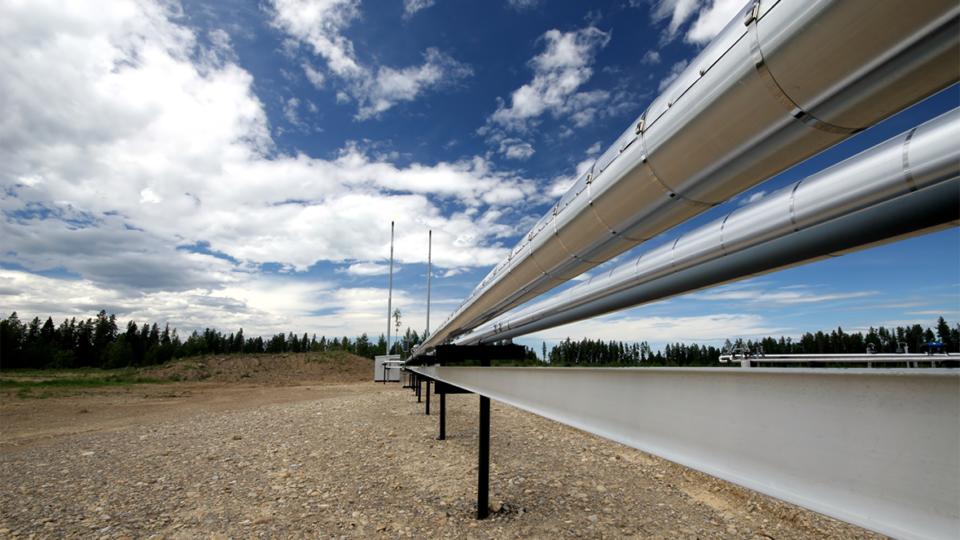In recent years, the United States has undergone an energy renaissance of sorts. After decades of importing significant volumes of natural gas, there has been a transformation in both the economy and policy on that source of energy in particular.
Americans began to produce and export natural gas in significantly higher quantities after technological changes (hydraulic fracturing or “fracking”) made extraction of previously uneconomic deposits easier to get at and bring to the surface. Supportive policy regimes which allowed for easier development of natural gas resources also helped.
Meanwhile, Canada has undergone a period of natural gas stagnation, partly the result of less supportive policies and regulatory constraints.
The divergence is obvious in the data. According to the U.S. Energy Information Administration (EIA), as of 2019, U.S. natural gas production hit nearly 34 trillion cubic feet (tcf) annually, up nearly 14.8 trillion cubic feet since 2000, an increase of 77%.
In contrast, Canada’s natural gas production was down 2.4% by 2019 when compared to 2000, to 6.3 trillion cubic feet from almost 6.5 trillion cubic feet.
While there are multiple reasons for the diverging natural gas paths of the United States and Canada, one of them is not technology. Both countries and the production companies therein generally have access to the same technology. Also, it wasn’t the presence of reserves. Both had (and have) reserves that can be economically developed and from which additional volumes of natural gas can be extracted.
The diverging fortunes of natural gas in the United States and Canada can be explained in large measure by two reasons.
First, policy in some of the provinces and federally (since 2015) that is more harmful than helpful to expanded natural gas development. It is why Chris Bloomer of the Canadian Energy Pipeline Association told a parliamentary committee in 2018 that they could “pick their poison” in deciding which federal regulations and laws were most harmful to the oil and gas industry and went beyond reasonable regulation.
Second, anti-oil and gas advocacy including against “fracking” in some parts of Canada has had its desired effect. That includes preventing onshore development of natural gas reserves in the Maritimes and Quebec, as two examples.
This is not universal. British Columbia’s NDP government for example, despite opposition to oil pipelines, has been generally supportive of natural gas development in the province.
After a 2019 scientific report commissioned by the BC Oil and Gas Commission found that BC’s regulatory framework for such exploration was “robust,” the BC NDP government added modest modifications to the regulations but otherwise accepted the consensus of the scientific panel.
Some American states have benefitted from Canada’s natural gas stagnation. We looked at four and tracked their production in 2019 relative to 2010: West Virginia (natural gas production was up seven-fold); North Dakota (nine times higher); Pennsylvania (a 12-fold increase); and Ohio, where natural gas production soared 34-fold in the last decade.
As a result, these four states alone saw their oil and natural gas revenues (mainly the latter) hit C$2.3 billion in 2018/19. In comparison, in Quebec and the four Atlantic provinces oil and gas revenues amounted to just $781 million that year—almost all of it from Newfoundland & Labrador’s offshore oil royalties.
Perhaps the most dramatic example of how Canada and the United States have diverged on natural gas production is on US exports to Canada: reaching 970 billion cubic feet in 2019 from just 73 billion cubic feet in 2000. That’s a 1,233% increase.
Canada, including the Atlantic provinces and Quebec, is not consuming less natural gas than it did two decades ago. While Canadian natural gas production fell by 2.4% (between 2000 and 2019), consumption soared by 47%. It’s just that American producers have increasingly filled Canadian demand.
Mark Milke and Lennie Kaplan are with the Canadian Energy Centre, an Alberta government corporation funded in part by carbon taxes. They are authors of Missed Maple Leaf Opportunities: A Synopsis of Natural Gas Industries in Central and Eastern Canada and Key US States.
